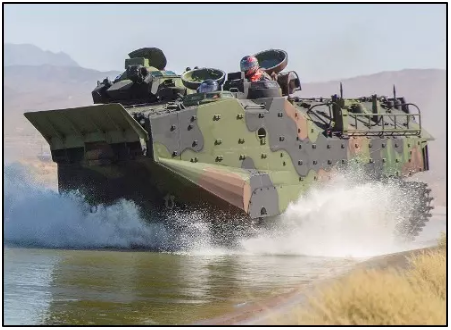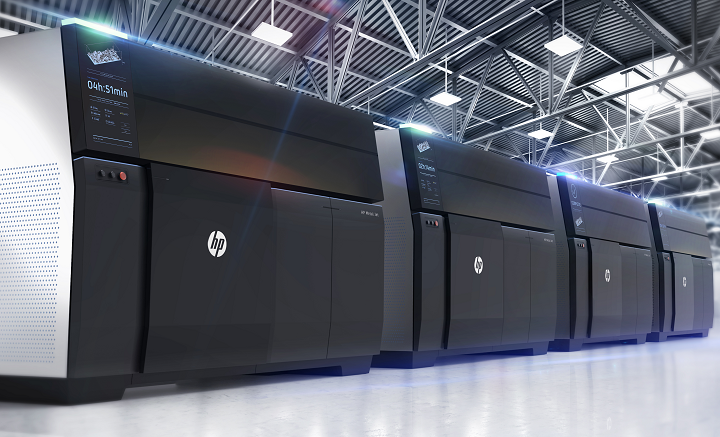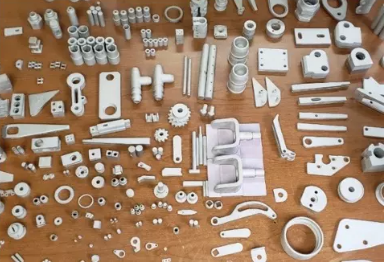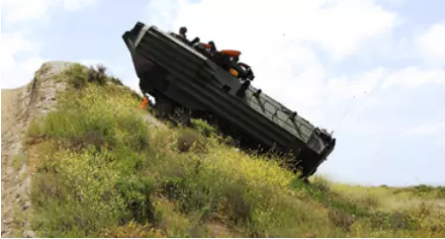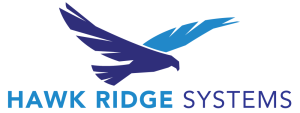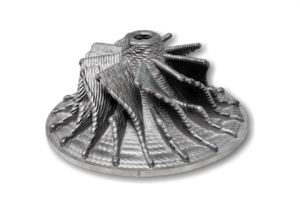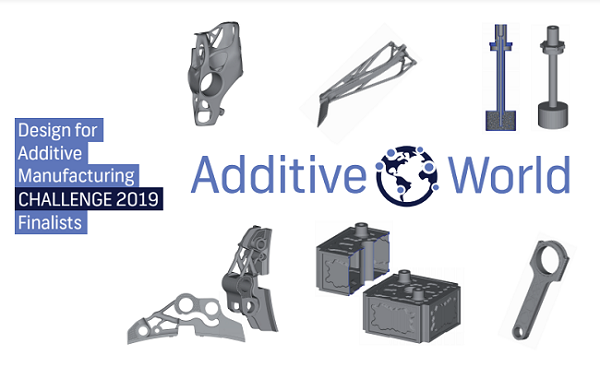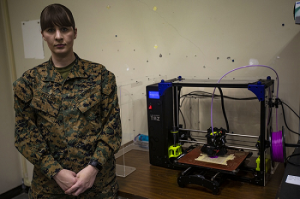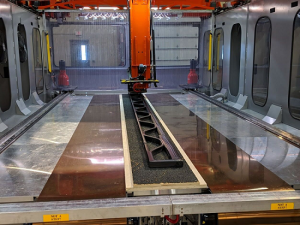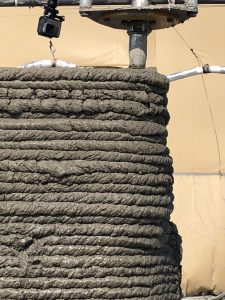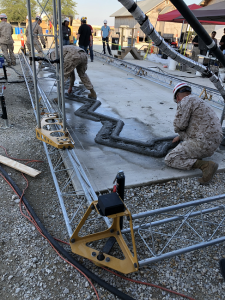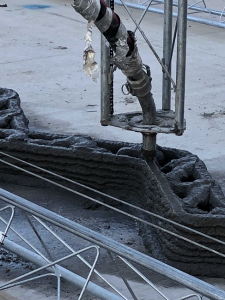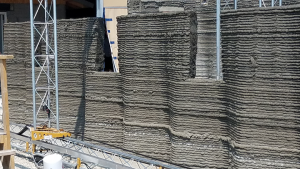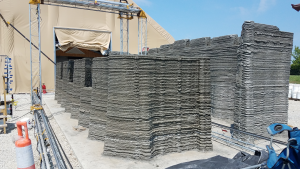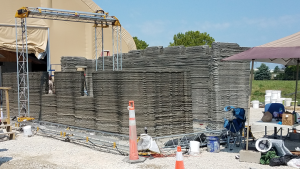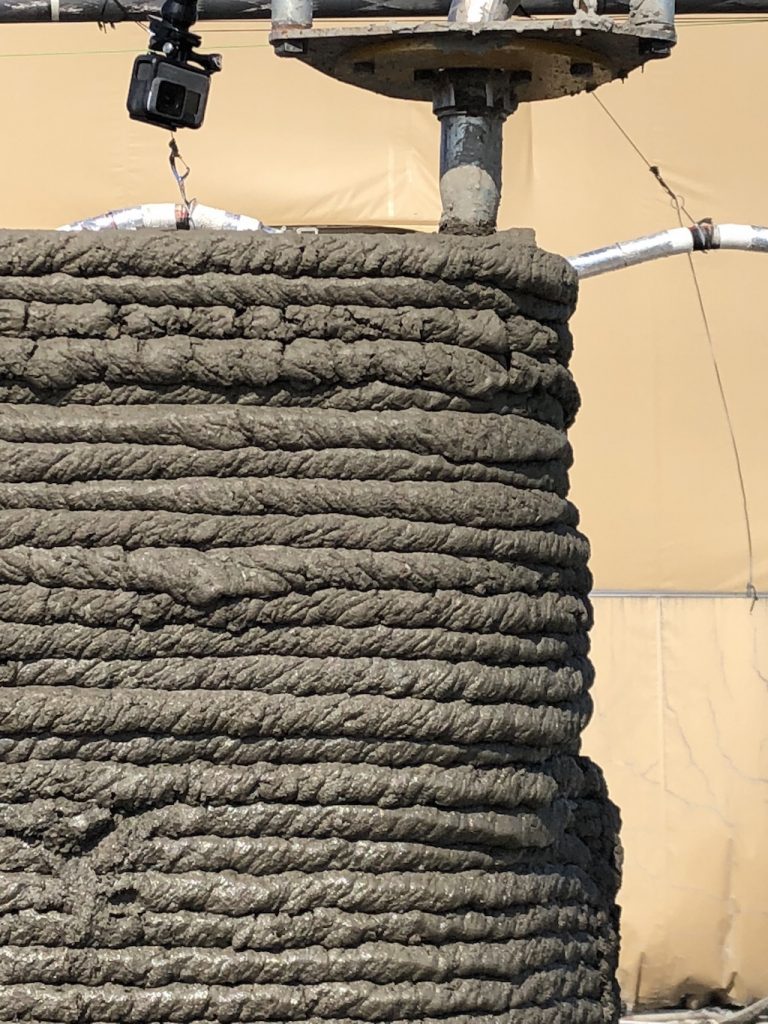In 2018, HP announced that it was entering the metal side of the additive marketing industry with the introduction of its Metal Jet technology. While Metal Jet has been used for applications in the automotive industry, the United States Marine Corps is now adopting it to make parts for a very different kind of vehicle: the 26-ton, bulletproof AAV, or Assault Amphibious Vehicle. Nicknamed the AmTrac, AAVs have been carrying over 20 humans and a storehouse of supplies safely back to shore since 1972, chugging through the water at eight mph. There are over 1,000 vehicles in the fleet, all of which will be phased out of operation in the next two decades.
Unfortunately, because the AAVs are set to retire, private manufacturers that have long made replacement parts for the vehicles are less enticed to do so now. This is causing a negative effect on the USMC supply chain: AAVs are sitting around unused, and Marines may even go to battle without them.
Kristin Holzworth, chief scientist for the Marine Corps Systems Command’s Advanced Manufacturing Operations Cell, stated, “This is a critical part of our future, ensuring readiness of those in uniform.”
That’s why the AAV program is turning to HP’s Metal Jet technology to 3D print replacement parts by the hundreds, like bolts and brackets, couplings and cranks, at California manufacturing company Parmatech.
“We go into some pretty remote areas and the supply chain is just not available to us yet. So, the ability to make our own parts at the point of need is critically important,” said Scott Adams, a civilian member of the USMC.
Most of these parts were previously made with subtractive manufacturing, but, by using metal 3D printing, they can be mass produced much more quickly. Metal Jet printers can place up to 630 million nanogram-sized drops of liquid binder per second onto the powder bed, and a polymer binds the metal particles together during the process to make high-strength parts.
“Being able to clasp (what used to require) 50 different, subtractive-manufacturing lines into a couple of prints, you almost can’t even put words to that. The efficiencies that are likely to come from that are absolutely astronomical,” said USMC Col. Patrick M. Col. Tucker, commanding officer of Combat Logistics Regiment 15 at Camp Pendleton, California, where marines train in AAVs.
A Marine Corps analysis conducted in April found that many AAVs have to wait, on average, 140 days for replacement parts, some of which have been back-ordered for over a year.
“It takes those Assault Amphibious Vehicles offline. As of (April 1), here at Camp Pendleton, we had 41 of our 214 vehicles in maintenance. It’s a very important platform to our combat readiness,” explained Col. Tucker, who served in the Iraq War and helps manage the Metal Jet program.
Additionally, Metal Jet 3D printing allows the soldiers to fabricate assemblies of multiple pieces as a single part, rather than welding them together.
Sgt. Jonathan Anderson, part of the 1st Supply Battalion at Camp Pendleton, said, “It gets rid of welds period, which is absolutely amazing. A weld is always a weak point. We are actually increasing the life cycle of these parts and potentially increasing the life cycle of the vehicle.”
At the moment, fewer AAVs can be used for training at Camp Pendleton, and even out in the field at distant bases, due to current part shortages.
Col. Tucker noted, “In extreme times where we have a kinetic operation, you could foresee that we may have to send (Marine) units without that.”
Soon, the 3D-printed AAV parts in the Metal Jet program will enter the first testing phase to make sure that they function properly in test vehicles and have accurate size and weight. Holzworth says that it’s “promising work” and that all parts tested so far have passed. In the second part of testing, the parts will be installed into the test AAV, which will then be driven in order to test the reliability.
Once the testing is complete, the retiring AAV fleet will be serviced much more quickly.
“It’s all about equipment readiness, and about our ability to deploy into an area or to sustain ourselves while we are there,” said Adams, who is on the team working to equip AAVs with 3D printed parts.
Col. Tucker states that the AAV is a “good Guinea pig tester,” but notes that the team is also looking into other USMC platforms that may benefit from the use of Metal Jet technology. Additionally, the program could have further reaching ramifications for the entire US military.
Because the Marine Corps is so small, it has what Col. Tucker calls a “shallow” supply chain, which means that the parts it needs aren’t as big as what the US Army uses. And just like with the AAV replacement parts, industrial manufacturers aren’t as inclined to use their machines to make the parts. Also, because the USMC works to defend our country’s interests all around the world, this small supply chain is often strained as well.
“That’s why something like rapid metal is so interesting. This capability would allow us to move around that problem,” Col. Tucker said.
Discuss this story and other 3D printing topics at 3DPrintBoard.com or share your thoughts in the comments below.
(Source/Images: HP)
The post Replacement Parts for Assault Amphibious Vehicle 3D Printed with HP’s Metal Jet appeared first on 3DPrint.com | The Voice of 3D Printing / Additive Manufacturing.

